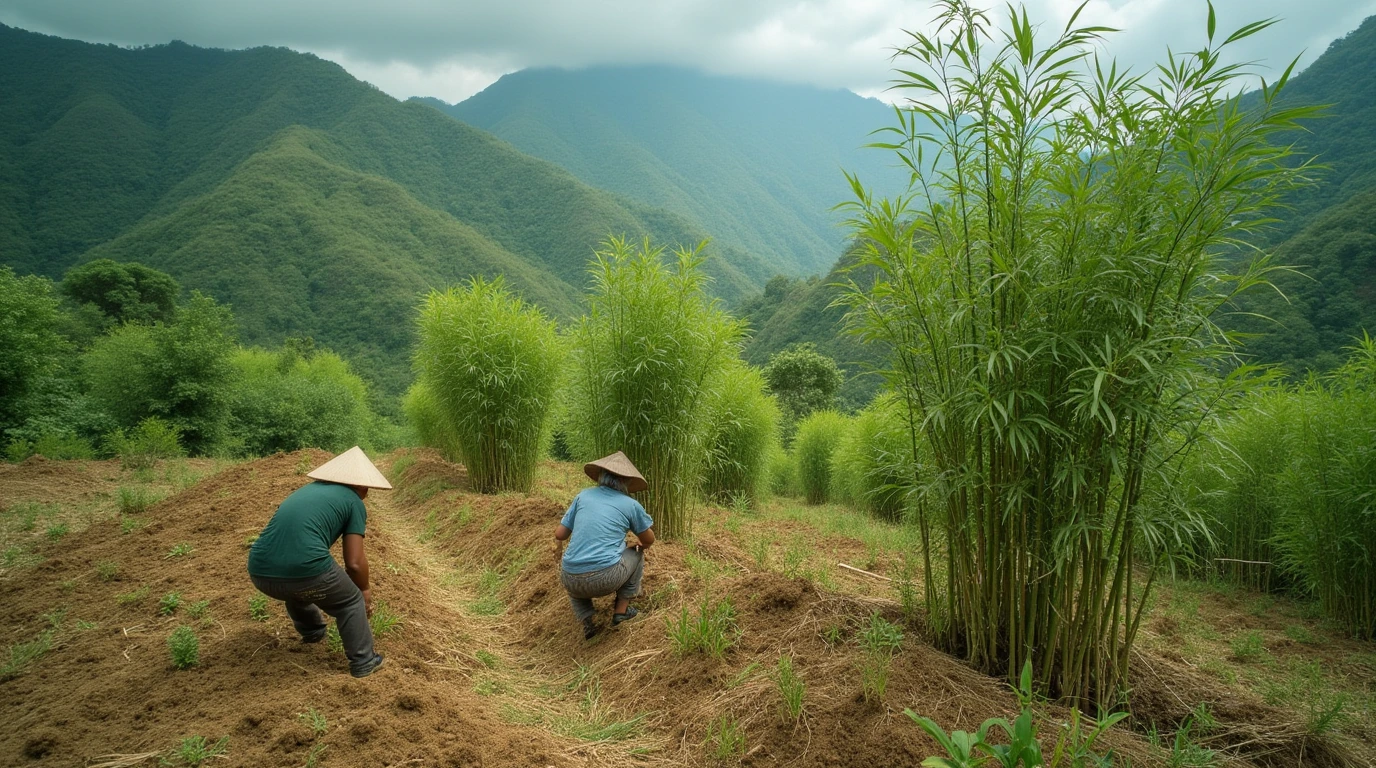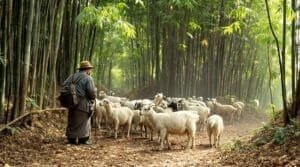Habitat fragmentation is emerging as one of the most significant threats to the long-term survival of red pandas. These elusive mammals thrive in the cool, temperate forests of the eastern Himalayas, depending on continuous stretches of bamboo-rich woodlands for food, shelter, and breeding. But as deforestation, infrastructure development, and agricultural expansion carve their habitats into isolated patches, red pandas face increasing challenges
Fragmented landscapes restrict their movement, reduce breeding opportunities, and expose them to poaching and other human-induced dangers. This article will explore the specific impacts of habitat fragmentation on red panda survival, detailing its effects on gene flow, behavior, and access to food, while also highlighting the conservation strategies—like wildlife corridors—that aim to reconnect and preserve these vital forest homes
How Habitat Fragmentation Threatens Red Panda Survival

Red pandas are highly specialized arboreal mammals that depend on uninterrupted forest ecosystems in the eastern Himalayas and southwestern China. They require a dense understory of bamboo, mature trees for nesting, and large, continuous territories to support their solitary lifestyle
However, habitat fragmentation—the breaking apart of continuous habitats into smaller, isolated patches—has emerged as a primary threat to red panda populations. As forests are increasingly dissected by roads, logging zones, agriculture, and human settlements, red pandas face compounding threats that hinder their movement, reduce genetic diversity, and compromise their survival
Genetic Isolation and Loss of Gene Flow
One of the most profound consequences of fragmentation is the genetic isolation it imposes on red panda populations. When habitat patches become separated by human infrastructure or degraded land, the ability of red pandas to migrate and interbreed is severely reduced. This restricted gene flow leads to inbreeding and a corresponding loss of genetic diversity
A 2020 study published in Scientific Reports by Bista et al. analyzed red panda populations across Nepal and found strong genetic structuring due to landscape barriers. The researchers identified rivers, agricultural fields, and roadways as key obstacles that prevent natural gene flow between subpopulations. This isolation increases the risk of inbreeding depression, where offspring exhibit lower fitness, reduced fertility, and higher susceptibility to disease
Furthermore, an analysis using landscape genomics in India’s Kangchenjunga region (2023, Mongabay India) revealed that habitat corridors are essential for maintaining gene flow. The study found that populations surrounded by intact forest displayed higher genetic variability compared to those in fragmented zones, reinforcing the importance of connectivity for species resilience
Breeding Challenges Due to Habitat Separation
Red pandas are solitary animals, and successful breeding requires large territories where individuals can locate mates during the short mating season. Fragmentation reduces available habitat and forces red pandas to remain confined to smaller areas, drastically decreasing the likelihood of mate encounters
The Smithsonian National Zoo and Conservation Biology Institute reports that red pandas breed just once a year, with females being receptive to mating for only one to three days. In fragmented habitats, if no mate is within close range, the opportunity for reproduction is likely missed. This can lead to a rapid decline in population numbers, especially in isolated patches where individual red pandas may go for years without encountering a suitable partner
The problem is compounded by stress-related behavioral changes. A study published in Frontiers in Ecology and Evolution (2021) showed that red pandas in fragmented areas displayed elevated levels of cortisol—a stress hormone—which can suppress reproductive hormones and reduce breeding success
Behavioral Adaptations in Fragmented Landscapes
Red pandas forced to navigate fragmented environments often alter their natural behaviors in ways that can be detrimental to their survival. One of the most significant changes involves movement and activity patterns. According to research published in Movement Ecology (2021), red pandas reduce their range size and avoid open or disturbed areas, which limits their ability to forage efficiently and find shelter
GPS telemetry data from a study published in PeerJ (2021) by Jha et al. revealed that red pandas in disturbed areas adjusted their movement patterns to remain within fragmented forest cores, avoiding the forest edges that are more exposed to human activities. However, this behavioral adaptation results in increased competition for limited resources within these shrinking cores
Stress-related behaviors have also been observed. Red pandas in fragmented habitats tend to become more nocturnal, possibly to avoid human encounters, and may suffer from disrupted feeding and resting schedules. Over time, these behavioral shifts can lead to poor nutrition, reduced reproductive success, and higher mortality
A comprehensive discussion of red panda responses to fragmented habitats, including hormonal and behavioral data, is available in this scientific article on the effects of fragmentation from the National Institutes of Health archive
Causes and Consequences of Fragmented Habitats

The complex web of causes behind habitat fragmentation in red panda territories often traces back to human activities that disrupt natural landscapes. The impacts of these disruptions extend far beyond the immediate loss of trees
They compromise ecological balance, reduce the red panda’s access to essential resources, and increase their exposure to dangers like poaching and road mortality. Understanding both the causes and their cascading effects is vital for developing effective conservation strategies
Drivers of Habitat Fragmentation in Red Panda Regions
The primary drivers of habitat fragmentation in red panda habitats are largely anthropogenic. These include deforestation for timber and agriculture, infrastructure development such as road construction, and livestock grazing in forested areas
In Nepal and northeastern India, logging—both legal and illegal—remains a persistent problem. According to the Red Panda Network, over 70% of red panda habitat in eastern Nepal lies outside protected areas, where forest patches are heavily fragmented due to human extraction of firewood, timber, and bamboo. In China’s Yunnan and Sichuan provinces, despite a national ban on logging in natural forests since the early 2000s, illegal operations still persist in remote regions, contributing to the degradation of the red panda’s mountainous habitat
Infrastructure is another major contributor. Roads, especially those built to support logging or rural development, dissect forest landscapes and reduce contiguous habitat. Research published in Scientific Reports (2020) identifies road density as a significant factor in habitat isolation for red pandas. These roads not only create physical barriers to movement but also bring increased human presence, leading to higher levels of habitat disturbance
Additionally, grazing by domestic livestock affects the growth and regeneration of bamboo, the red panda’s primary food source. In areas where traditional pastoralism overlaps with red panda habitats, overgrazing leads to soil compaction and reduced bamboo density, making these zones unsuitable for long-term survival
Elevated Poaching and Human Encounters
Fragmented habitats bring red pandas into closer proximity with human settlements, thereby elevating their risk of poaching and other direct threats. Roads and trails introduced during deforestation projects become conduits for illegal wildlife trade. Red pandas are often hunted for their fur or captured for the pet trade, and their elusive nature makes them difficult to monitor and protect in fragmented environments
A report from the International Fund for Animal Welfare (IFAW) states that fragmented landscapes reduce the “border-sharing” between different red panda groups, making individual pandas easier to track and target. The same fragmentation that prevents mating and dispersal also exposes these solitary animals to human contact
Furthermore, edge effects—ecological changes occurring at the boundaries of fragmented habitats—heighten vulnerability. These edges typically experience greater fluctuations in temperature and humidity, are more prone to invasion by non-native plant species, and serve as entry points for predators such as feral dogs, which are known to attack red pandas
Mortality Risks in Disconnected Ecosystems
Disconnection of habitats not only isolates populations but also contributes directly to mortality. Fragmented ecosystems increase the likelihood of vehicle collisions, especially in regions where roads cross or border forest patches. In India’s Arunachal Pradesh and Sikkim, red pandas have been found dead on roads that intersect their territories, often near ecotourism zones or timber transport routes
Habitat fragmentation also leads to resource scarcity. In small forest patches, bamboo availability may fluctuate more dramatically, and nesting trees may be limited, forcing red pandas into less optimal areas where survival is harder. According to the World Wildlife Fund (WWF), nearly 50% of red panda habitat has been cleared in recent decades, much of it in areas that were once core feeding and nesting zones
To better understand the scale of this issue, WWF provides detailed data on habitat loss and threats in their red panda conservation summary
Conservation Strategies for a Connected Future

As the threats posed by habitat fragmentation continue to rise, red panda conservation has increasingly shifted toward landscape-level solutions that reconnect fragmented forests and enable safe movement across ecosystems
Recognizing the importance of connectivity, conservationists, governments, and local communities are investing in strategic interventions that bridge gaps, restore degraded zones, and support red panda populations with better access to food, mates, and secure habitats. These efforts not only address fragmentation directly but also lay the groundwork for long-term ecosystem resilience
Role of Wildlife Corridors in Red Panda Recovery
Wildlife corridors are among the most effective tools for mitigating the impacts of fragmentation on red pandas. These corridors are strips of protected or restored habitat that link isolated forest patches, enabling red pandas to move between areas without crossing human settlements or roads. Corridors reduce genetic isolation, facilitate breeding opportunities, and help maintain stable population sizes across broader landscapes
In Nepal, the Red Panda Network has launched the “Plant A Red Panda Home” campaign, which focuses on reforesting degraded land and connecting key habitat fragments across the Panchthar–Ilam–Taplejung corridor. This area is a biodiversity hotspot but has suffered extensive fragmentation due to human settlement expansion. By planting native species and reestablishing bamboo undergrowth, these efforts not only rebuild physical habitats but also ensure the ecological integrity of movement routes
Scientific models of connectivity—using GIS-based habitat suitability and cost-distance mapping—have been instrumental in identifying where corridors are most needed. A study published in PeerJ (2021) by Jha et al. proposed optimal paths for red panda dispersal in Nepal’s eastern forests, emphasizing areas with low human pressure and high canopy cover. Implementing such scientifically grounded corridor plans can reduce travel barriers and increase survivorship across fragmented landscapes
Corridor development is also underway in India’s Sikkim and Arunachal Pradesh, where government agencies and NGOs collaborate to secure cross-border red panda habitats. These corridors are vital in maintaining ecological networks between India, Bhutan, and Tibet—ensuring genetic flow and dispersal at the international level
Food Access and Ecosystem Restoration Initiatives
Restoring fragmented habitats is not just about connectivity—it’s also about rehabilitating ecosystems that provide essential resources for red panda survival. Red pandas rely almost exclusively on bamboo, which is sensitive to disturbance and requires specific conditions to thrive. Habitat fragmentation often disrupts bamboo regeneration, particularly in edge zones where microclimate fluctuations and soil degradation occur
Ecosystem restoration programs now prioritize bamboo replanting as part of their habitat management plans. In China’s Sichuan province, local forestry departments have introduced pilot bamboo nurseries in degraded red panda zones to accelerate natural regeneration. These nurseries are integrated into afforestation projects that also include the planting of tree species suitable for nesting
In addition to physical restoration, food access is being supported through forest enrichment strategies. In India’s Singalila and Neora Valley National Parks, researchers and park authorities have identified degraded corridors where bamboo has been nearly wiped out due to overgrazing. Reforestation projects in these zones now incorporate controlled grazing limits and fencing to protect young bamboo shoots and promote regrowth
Monitoring the effectiveness of these initiatives is a key part of ongoing conservation work. Red Panda Network field teams, for instance, use camera traps and fecal DNA sampling to track red panda movement and diet within restored corridors. These data provide critical insights into how quickly red pandas recolonize restored patches and how well food resources are recovering
For a broader overview of red panda conservation actions tied to fragmentation and habitat restoration, the International Fund for Animal Welfare (IFAW) outlines current threats and intervention strategies in their dedicated species page












